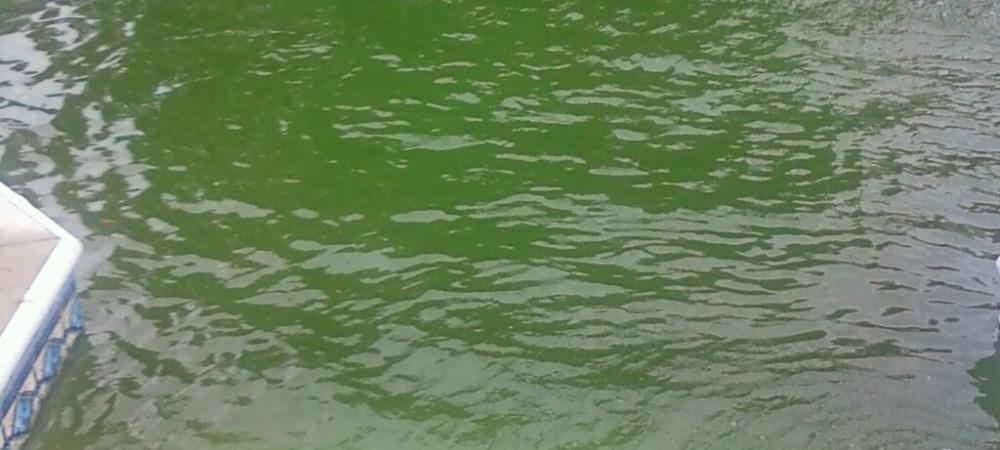
The Hidden Cost of Neglecting Your Pool for Just One Season
Living in Florida means our swimming pools are more than just a luxury; they're a central part of our lifestyle. They're for cooling off on humid afternoons, for weekend barbecues, and for creating family memories. Because they're so essential, it’s tempting to think they’re invincible. But what happens when life gets in the way? Perhaps a busy work schedule, an extended vacation, or a tight budget makes you think, "I'll just skip the pool service for one season. What's the worst that can happen?"
Unfortunately, here in the Sunshine State, "one season" is a dangerously long time. The combination of intense sun, high humidity, and heavy rains creates the perfect storm for a pool to decline—fast.
We've seen it countless times in our 51 years of serving Florida homeowners: a decision to "save money" by neglecting the pool for a few months leads to a cascade of problems. That sparkling blue oasis can quickly turn into a green, murky swamp. This isn't just an eyesore; it's the beginning of a costly battle that can drain your wallet far more than regular maintenance ever would.
That Green, Murky Mess
You pull back the pool cover after months of avoidance, and your stomach drops. The water isn't just "a little cloudy." It's opaque. You may be looking at:
- Bright green water: A sign of a thriving algae bloom.
- Dark, swampy black: Indicates algae, a high level of organic debris, and decay.
- A "bathtub ring": A slimy, dark ring of grime and organic matter at the waterline.
- Visible debris: A thick layer of leaves and muck has settled on the bottom.
This is more than just "dirty water." This is a complex chemical and biological problem. You're looking at the visible result of a neglected Florida pool, and it's a clear sign that bigger, more expensive issues are likely hiding just beneath the surface.
Why Did My Pool Turn Green So Fast?
A swimming pool is a delicate ecosystem that relies on two key things: circulation and sanitation. In Florida, this ecosystem is under constant assault. When a pool is neglected, that system fails, and the two main culprits take over:
- Lack of Filtration: The pump is the heart of your pool. If it isn't running for 8-10 hours every day, the water stagnates. Stagnant water is a perfect, welcoming home for algae and other unwanted organisms.
- Chemical Imbalance: Chlorine, the primary sanitizer, is constantly being used. It's broken down by the sun's UV rays, diluted by our heavy rains, and consumed by organic debris (like leaves, dust, and body oils). Without weekly testing and balancing, the sanitizer level can drop to zero in just a few days, giving algae the green light to multiply.
The Domino Effect: What Really Happens When You Neglect Pool Care?
The green water is just the most obvious symptom. The real damage from pool neglect is often invisible—at first. Here’s what’s likely happening beneath the surface and behind the scenes:
- Algae Invasion: This isn't just floating on the surface. Algae has roots that can burrow into your pool's plaster, pebble, or vinyl liner, causing deep, permanent staining that regular chemicals can't remove.
- Equipment Damage: Stagnant, unbalanced water is terrible for your expensive equipment. Highly acidic or alkaline water can be corrosive. It may eat away at pump seals, O-rings, and gaskets, leading to leaks. It can also be tough on your pump motor, which may strain or seize trying to push water through a filter completely clogged with algae and gunk.
- Pest Infestations: A neglected, stagnant pool is a public health issue. It becomes a prime breeding ground for mosquitoes. The Florida Department of Health warns that unmaintained pools are a major contributor to mosquito populations, which can carry diseases.
- Surface Degradation: Improper pH levels can, over time, begin to etch and pit your pool's plaster. This rough surface not only feels bad on your feet but also makes it easier for algae to take hold in the future.
Can I Really Fix a "Swamp Pool" Myself?
We get it. The first instinct for many Florida homeowners is to head to the big-box store, grab a shopping cart, and load up on shock, algaecide, and clarifier. A "can-do" attitude is admirable, but a full "green-to-clean" restoration is often much more complex than it appears.
Many well-intentioned homeowners find themselves in a frustrating—and expensive—cycle.
The Vicious DIY Cycle:
- The Chemical Dump: You buy pounds and pounds of granular shock, gallons of liquid chlorine, and several bottles of algaecide. You dump them in. The water may turn a milky, cloudy white, but it's far from clear.
- The Endless Filter Nightmare: Your filter, which was never designed to handle this volume of dead organic matter, clogs almost immediately. You're now stuck backwashing or cleaning cartridges 3-4 times a day.
- The "Almost Clear" Trap: After days (or even weeks) and hundreds of dollars in chemicals, the water is still stubbornly cloudy. You just can't get the balance right, and the filter can't keep up.
The hidden cost of DIY isn't just the $300-$500 you might spend on chemicals that may not work. It's your time—dozens of hours. It's the frustration. And it's the very real risk of accidentally damaging your equipment or surfaces by using the wrong treatments.
Before you spend another weekend battling the algae, it's worth considering what a professional cleanup actually involves.
What Does a Professional "Green Pool" Restoration Involve?
Since 1974, Fiji Pools has refined a systematic process to reclaim even the most neglected Florida pools. It's not about just dumping chemicals and hoping for the best; it's a science.
While every pool restoration is different, our professional approach typically involves:
- Professional Diagnosis: We test the water, but more importantly, we assess the equipment and surfaces. Is the filter working correctly? Is the plaster stained or just dirty? We need to know the full picture.
- Specialized Debris Removal: We often use external pumps and vacuums to remove the bulk of the muck and leaves to waste, completely bypassing your filter. This prevents overwhelming your system.
- Targeted Water Treatment: We use a strategic combination of flocculants (to bind tiny particles together so they can be filtered) and professional-grade treatments to address the algae. This is a multi-step process over several days.
- Comprehensive Filter Service: This is the most critical step. We will professionally disassemble and deep-clean your filter (whether it's DE, cartridge, or sand) to ensure it's 100% ready to handle the job of clearing the water.
- Final Rebalancing: Once the water is clear, we meticulously rebalance all key levels: pH, total alkalinity, calcium hardness, and sanitizer. This creates a stable, healthy swimming environment.
Our team has the experience, tools, and professional-grade products to do in 2-4 days what might take a homeowner weeks of frustrating, expensive effort.
Tired of the green? [Get a free, no-obligation estimate on your pool recovery today.]
The True Cost: A Few Hundred Now vs. Thousands Later
Let's talk numbers. A serious DIY swamp cleanup can easily cost $300-$500 in chemicals alone, with no guarantee of success. If you burn out your pump motor in the process, that's another $800-$1,500. If the algae and harsh chemicals stain your plaster, you could be looking at a $10,000+ resurfacing job.
A professional "green-to-clean" service is a fixed cost for a guaranteed result. You save your equipment from stress, you save your weekends, and you prevent a minor problem (green water) from becoming a catastrophic expense (a full pool renovation). In almost every case, hiring a professional for a major cleanup is the most cost-effective choice.
How do you prevent your Florida pool from turning green?
To prevent a neglected Florida pool, consistency is key. Run your pump 8-10 hours daily, test and balance water chemistry weekly, and clean the filter regularly. Regular brushing of walls and steps also prevents algae from taking hold. Consistent, routine maintenance is far less expensive than a full "green-to-clean" restoration.
This is the real secret. The best way to save money on your pool is not to skip service, but to invest in consistent service. According to resources from the University of Florida, proper, routine care is the only way to manage a pool in our climate. A well-maintained pool rarely needs expensive emergency cleanups.
Our weekly maintenance plans are designed to prevent these problems before they ever start.
Your Pool: An Asset, Not a Swamp
Your swimming pool is one of your home's biggest assets, especially here in Florida. It's a source of joy, relaxation, and family time. Don't let neglect turn it into a costly, stressful liability. With 51 years of experience, Fiji Pools ensures your pool remains a beautiful oasis, not a backyard burden.
Ready to Reclaim Your Paradise?
Stop staring at that green water and wondering where to start. Let the experts at Fiji Pools take the burden off your shoulders. We can give you a clear, honest quote to bring your pool back to its sparkling blue best—often faster and for less money than you'd spend trying to do it yourself.
Call us today or complete our online form to schedule a no-obligation pool recovery consultation.
Sources
- Centers for Disease Control and Prevention. (n.d.). Recreational Water Illnesses. https://www.cdc.gov/healthywater/swimming/swimmers/rwi.html
- Florida Department of Health. (n.d.). Mosquito-Borne Diseases. https://www.floridahealth.gov/diseases-and-conditions/mosquito-borne-diseases/index.html
- University of Florida, IFAS Extension. (2022). The Basics of Residential Swimming Pool and Spa Water Maintenance. https://edis.ifas.ufl.edu/publication/AE114
